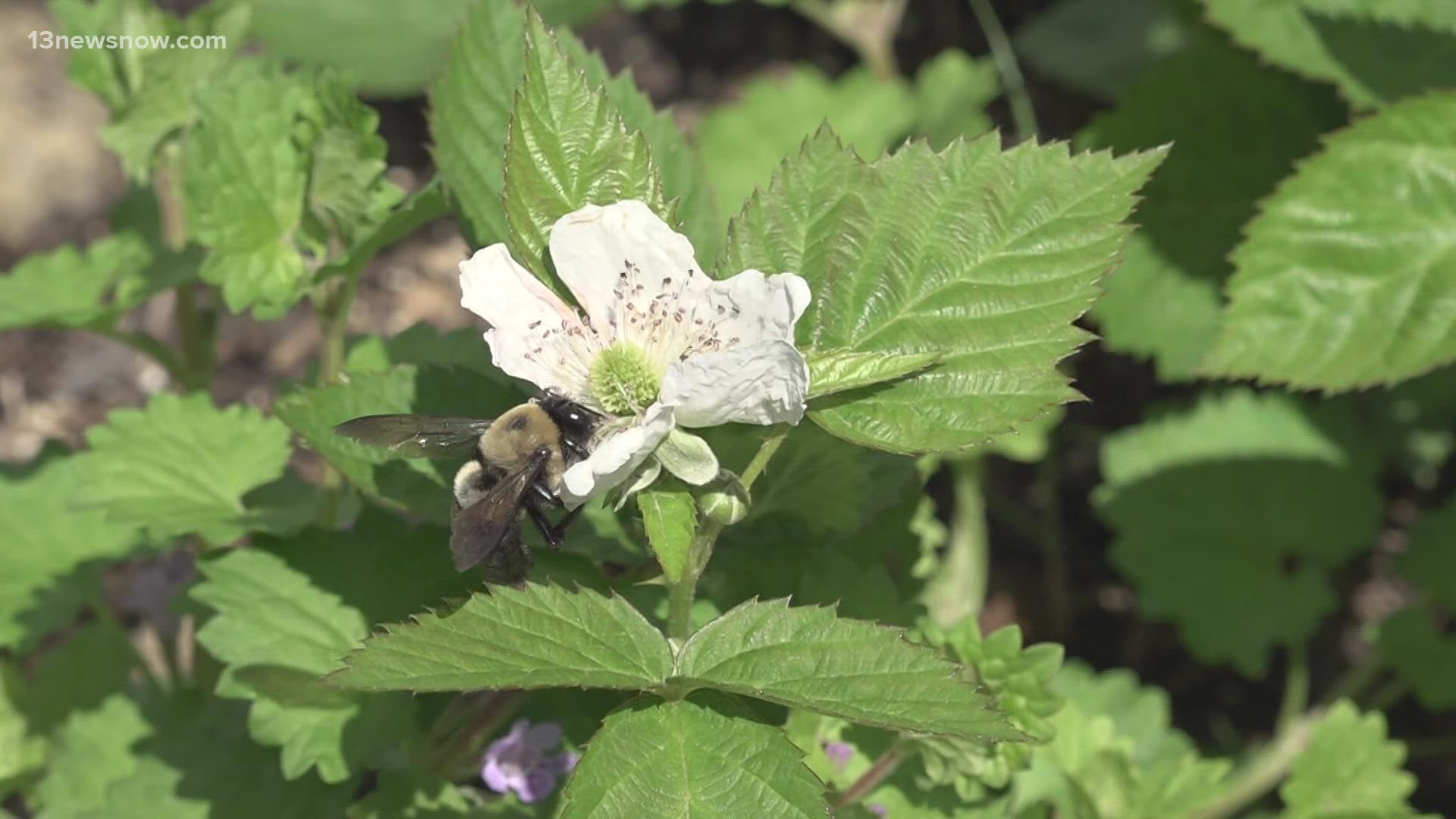NEWPORT NEWS, Va. — "It forces me to calm down, and it forces me to slow down. So it's kind of like doing Tai Chi in a bee suit."
Master beekeeper Andy Westrich, owner of Hampton Apiary, loves keeping bees. He's maintained hives for 17 years and is the volunteer beekeeper behind the hive at the Virginia Living Museum in Newport News.
Darl Fletcher, the horticultural curator in charge of plants for the museum, knows firsthand how important they are.
"Their big importance is the fact that we need pollinators, or else we wouldn't have any fruits and vegetables," Fletcher said.
He said attracting bees and butterflies to your yard will help everything there flourish.
"If you’re growing a home garden in your yard, it’ll greatly increase what you have. Because you’re going to attract the pollinators into your yard and then when your vegetables start blooming, it's just yet another flower they'll go to, to start pollinating," he explained.
Allergic to pollen? The plants that bees like aren't your enemies.
"Plants that have like showy flowers, the pollen is moved around by the insects, so it doesn’t blow in the winds," Fletcher said. "So things like grasses and trees that are wind-pollinated are where you get your allergies from, and things that have nice pretty flowers that are attracting pollinators, don't affect us."
Foraging bees shouldn't bother you, either.
"If you put mountain mint in a little four-by-four garden, in the middle of the summertime, it's going to be covered in honeybees. Hundreds, if not thousands, of honeybees. And you can go walking around it and everything, and they're not going to touch you."
It's not just what plants you put in your yard that matters, though. Inviting pollinators in can also depend on what you keep out of your yard.
"The biggest thing that somebody could do to make their yard bee-friendly is to be careful in their pesticide usage," Westrich said. "And that goes right into mosquito control."
He said a lot of pesticides that companies use to spray mosquitos can be very harmful to bees.
"If you have trouble with mosquitos in your yard, there’s OFF!, there’s all kinds of products you can put on yourself that keep yourself from getting bit by mosquitos. But go around your yard, make sure the pails are empty, make sure your gutters are clean, make sure that there’s no standing water," he said. "Those things alone are going to reduce the mosquito population."
Fletcher sprays the museum's plants with a mix of water and a bit of dish soap to drown unwanted pests.
"Even just taking a hose and misting and spraying your plants off good helps deter pests, because a clean plant is a happy plant," Fletcher said. "It cleans the dust and stuff off so it’s harder for them to affix eggs."
That method keeps plants healthy and ready for the museum's annual native plant sale, which is kicked off for members on Thursday, and opens to the public on Saturday, April 23.
Fletcher gave a rundown of two varieties of mountain mint, a plant majorly attractive to bees and easy enough for beginners to maintain.
Clustered mountain mint likes full sun, while slender leaf mountain mint can tolerate sun with partial shade. Both plants take a variety of soil conditions, and while they die back in the winter, come right back in the spring.
Mountain mint blooms with silvery-white pincushion flowers in the summertime.
They're not true mint plants, but they're moderately drought-tolerant and spread over time, like traditional mint.
So if you're sprucing up your garden, how many pollinator-friendly plants does it take to make a difference?
"The more the better, but even one or two, everything counts," Fletcher said. "Everything you do in your yard — because hey, your neighbor is going to do something in their yard, and as everybody does more in their yard, it just creates a larger and larger area for them."
If you want to go to the native plant sale at the Virginia Living Museum, admission to the sale area is free, and it will run the weekend of April 23 and the weekend of April 30. Weekend hours are from 9 a.m. to 4:30 p.m. Starting April 25, guests can also shop online and pick up their plants at the museum.

